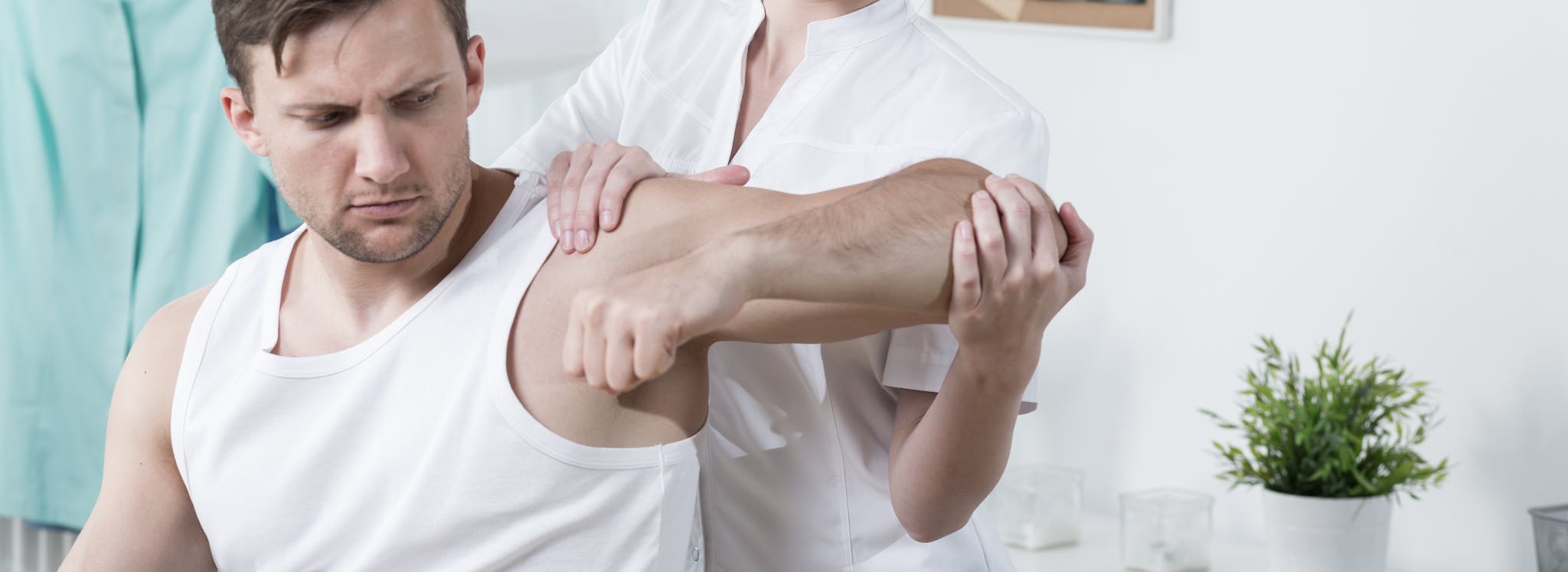
2024-07-12T16:54:51
Sunscreen Travel Tips
- Dermatology
May 14, 2019 | Orthopedics

When struck with enough force, the ball-and-socket joint of your shoulder has the potential to dislocate, often resulting in symptoms such as swelling, bruising and numbness, as well as an unusual appearance of the shoulder. Unlike most joints, it is the soft tissues that surround the ball and socket that provides the stability of the shoulder rather than the shape of the joint itself. This affords the shoulder the most range of motion of any of the joints in the body, but it also provides less protection against dislocation.
Although treatment of a dislocated shoulder is often fairly simple and straightforward, you should never try to put the joint back in its socket by yourself. There is a risk of developing complications from a shoulder dislocation, and receiving treatment from a doctor helps minimize the risk of those complications and prevent future dislocations from occurring.
To effectively treat a dislocated shoulder, it is necessary for your doctor to determine the direction in which the upper arm bone has moved from the joint. A shoulder can dislocate in three different directions: backward, downward or forward.
The procedure to reduce a dislocated shoulder, i.e., put it back in the proper place, involves pulling the arm in a specific direction. Knowing the direction in which the shoulder dislocated allows your doctor to pull your arm in the right direction to move the bone back into position.
Reduction of a dislocated shoulder can be painful. Your doctor can give you an anesthetic shot to numb the joint and dull the pain, making the procedure more comfortable for you.
An X-ray of the shoulder allows the physician to accurately determine the direction in which the dislocation occurred but also allows him or her to see if any bones have broken during the accident. If you do have a shoulder fracture in addition to the dislocation, it will require separate treatment. In the absence of X-rays after a dislocation, any fractures you may have sustained are likely to go undetected and untreated, which can cause further problems in the future.
Dislocating your shoulder once makes it more likely to happen again because of damage to the soft tissues and ligaments that hold your joint in place. Recurrent shoulder dislocations can lead to bone damage that may require surgery. Your doctor can prescribe physical therapy and bracing to strengthen and support your soft tissues and lessen your chances of recurrent dislocations.
A key to stabilizing your shoulder after a dislocation is strengthening your rotator cuff, the muscles that press the ball of your arm bone into the socket of your shoulder. Rotator cuff strengthening involves working against resistance in either internal or external rotation. An example of an internal rotation strengthening exercise would be trying to move your arm toward your body while holding an exercise band tied to a fixed object. For external rotation, you could hold the exercise band in both hands while pulling the affected arm away from your body.
After a shoulder dislocation, your doctor may send you to a physical therapist who can teach you exercises to stabilize your shoulder. It is important that you follow the directions of your doctor and therapist and don’t try to do too much, too soon.
“Dislocated Shoulder.” American Society for Surgery of the Hand.
http://www.assh.org/handcare/hand-arm-injuries/dislocated-shoulder
“Dislocated Shoulder.” OrthoInfo, From the American Academy of Orthopeadic Surgeons.
https://orthoinfo.aaos.org/en/diseases–conditions/dislocated-shoulder
“Home Exercises for the Unstable Shoulder.” University of Washington Medicine.

WRITTEN BY:
The Live Better Team


2024-07-12T16:54:51

2024-07-02T11:42:04

2024-07-01T13:49:28

2024-06-21T14:29:51
This information is not intended to replace the advice of a medical professional. You should always consult your doctor before making decisions about your health.